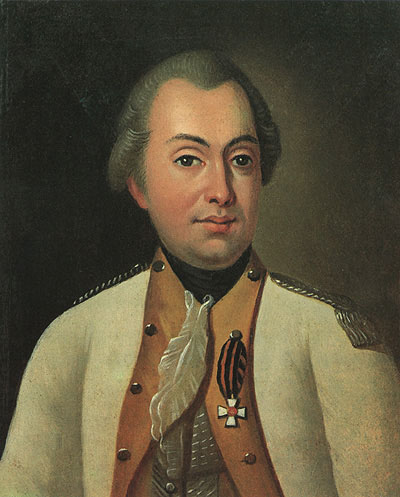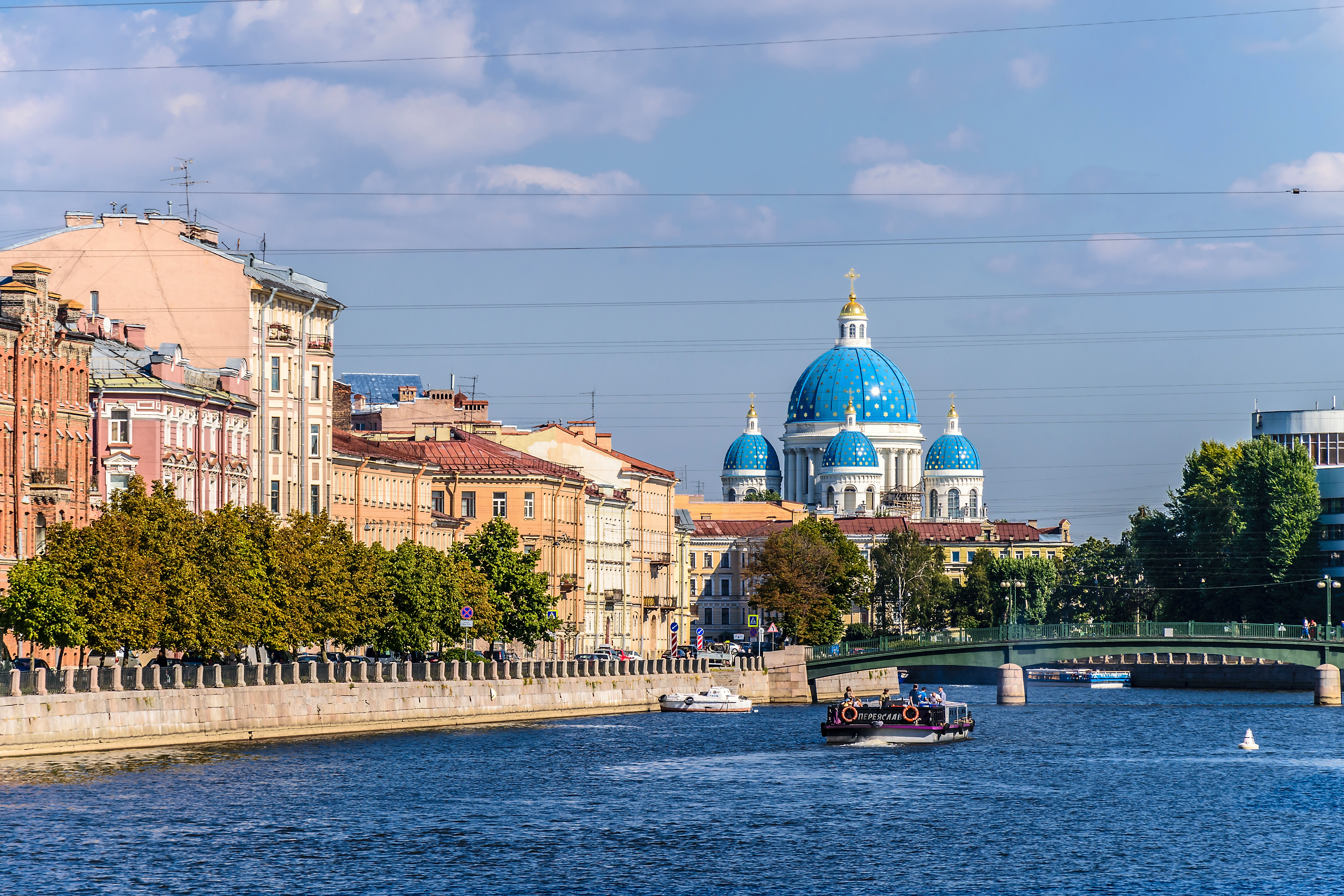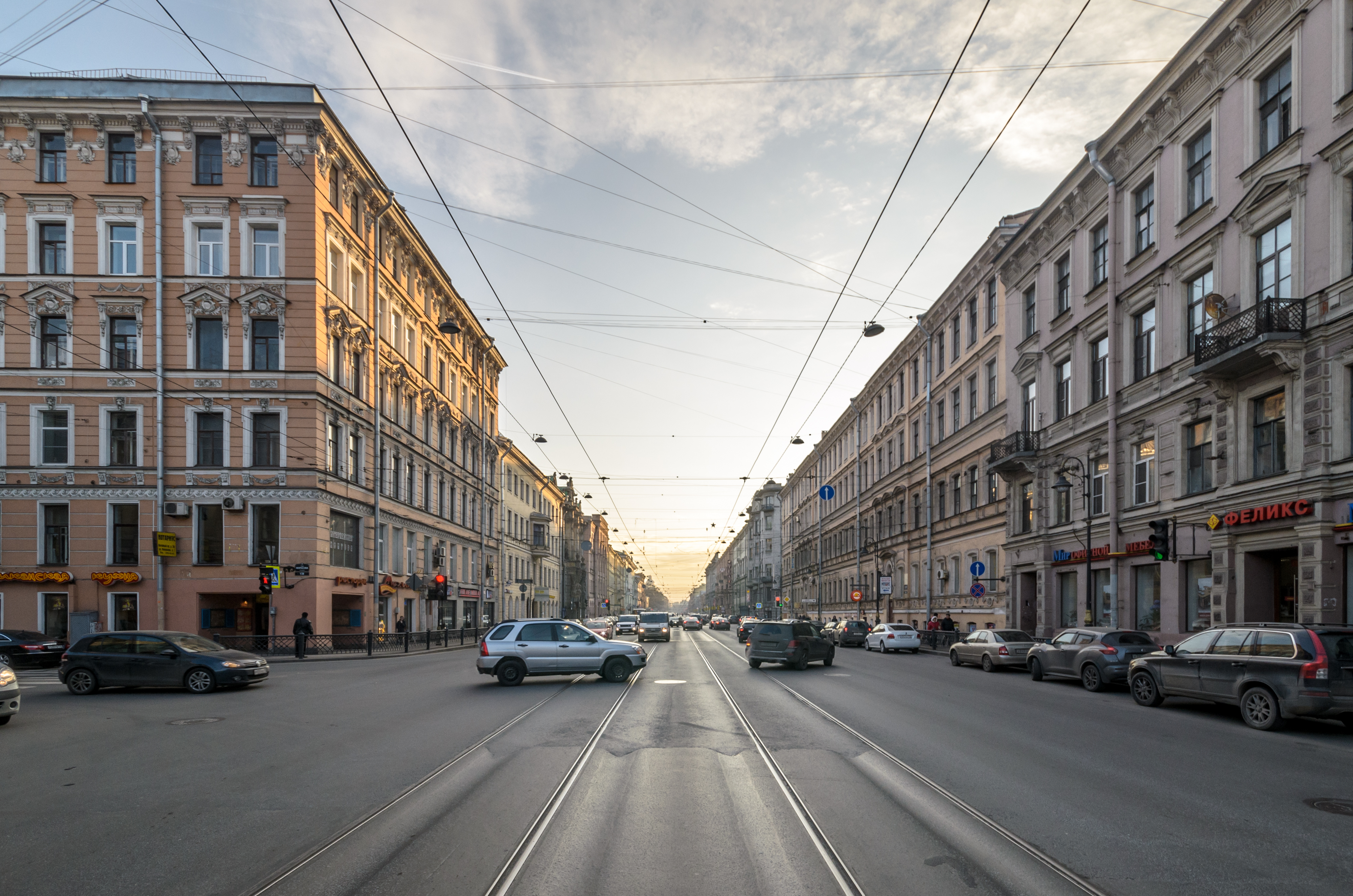|
Kutuzov Embankment
The Kutuzov Embankment or Kutuzov Quay () is a street along the Neva River in Central Saint Petersburg. The street begins at the Fontanka, where the Palace Embankment becomes the Kutuzov Embankment, and the street ends at the Liteyny Prospekt and Liteyny Bridge. It was known as the French Embankment in the beginning of the 19th century, as the French Embassy used to be located on the street. The street was later named after Prince M. I. Kutuzov, who began his successful campaign against Napoleon Bonaparte during the French Invasion of Russia on the embankment. References External links Official websiteof Saint Petersburg Saint Petersburg, formerly known as Petrograd and later Leningrad, is the List of cities and towns in Russia by population, second-largest city in Russia after Moscow. It is situated on the Neva, River Neva, at the head of the Gulf of Finland ... Streets in Saint Petersburg Cultural heritage monuments of federal significance in Saint Petersburg< ... [...More Info...] [...Related Items...] OR: [Wikipedia] [Google] [Baidu] |
Kutuzov Embankment SPB (img1)
Prince Mikhail Illarionovich Golenishchev-Kutuzov-Smolensky (; – ) was a Field Marshal of the Russian Empire. He served as a military officer and a diplomat under the reign of three Romanov monarchs: Empress Catherine II, and Emperors Paul I and Alexander I. Kutuzov was shot in the head twice while fighting the Turks (1774 and 1788) and survived the serious injuries seemingly against all odds. He defeated Napoleon as commander-in-chief using attrition warfare in the Patriotic war of 1812. Alexander I, the incumbent Tsar during Napoleon's invasion, would write that he would be remembered amongst Europe's most famous commanders and that Russia would never forget his worthiness. Early career Youth Mikhail Kutuzov was born in Saint Petersburg on 16 September 1745. His father, Lieutenant-General (1717–1784), had served for 30 years with the Corps of Engineers, had seen action against the Turks and served under Peter the Great. His mother was Anna Illarionovna Beklemisheva ... [...More Info...] [...Related Items...] OR: [Wikipedia] [Google] [Baidu] |
Neva River
The Neva ( , ; , ) is a river in northwestern Russia flowing from Lake Ladoga through the western part of Leningrad Oblast (historical region of Ingria) to the Neva Bay of the Gulf of Finland. Despite its modest length of , it is the fourth-largest river in Europe in terms of average Discharge (hydrology), discharge (after the Volga, the Danube and the Rhine). The Neva is the only river flowing from Lake Ladoga. It flows through the city of Saint Petersburg, the three smaller towns of Shlisselburg, Kirovsk, Leningrad Oblast, Kirovsk and Otradnoye, Kirovsky District, Leningrad Oblast, Otradnoye, and dozens of settlements. It is navigable throughout and is part of the Volga–Baltic Waterway and White Sea–Baltic Canal. It is the site of many major historical events, including the Battle of the Neva in 1240 which gave Alexander Nevsky his name, the founding of Saint Petersburg in 1703, and the Siege of Leningrad by the German army during World War II. The river played a vital r ... [...More Info...] [...Related Items...] OR: [Wikipedia] [Google] [Baidu] |
Central Saint Petersburg
Central Saint Petersburg is the central and the leading part of Saint Petersburg, Russia. It looks nothing like the downtown district of a typical major city, and has no skyscrapers. The Central Business District's main borders are Neva River to the north and west, and the Fontanka River to the south and east, but the downtown includes areas outside. History The Central Saint Petersburg is the oldest part of the city after the Peter and Paul Fortress. When people were starting to populate Saint Petersburg they built their houses around the almost only building outside the fortress; the Admiralty building. The largest industry was ship building. The first residence of Peter the Great was a little hut (the hut hasn't been destroyed and is a museum), but he soon started to build the Summer Palace, which was located just opposite the hut, on the other side of the Neva River, and later he built a Winter Palace for himself. The central part of the city was supposed to be between th ... [...More Info...] [...Related Items...] OR: [Wikipedia] [Google] [Baidu] |
Fontanka
The Fontanka (), a left branch of the river Neva, flows through the whole of Central Saint Petersburg, Russia – from the Summer Garden to . It is long, with a width up to , and a depth up to . The Moyka River forms a right-bank branch of the Fontanka. Lined along the Fontanka Embankment stand the former private residences of Russian nobility. Description The river, one of 93 rivers and channels in Saint Petersburg, was once named ''Anonymous Creek'' (in Russian, ''Bezymyannyi Yerik'', ''Безымянный ерик''). In Russian, ''yerik'' is a secondary or intermittent river-channel ( creek or brook). In 1719 the river received its present name, because water from it supplied the fountains of the Summer Garden. Until the mid-18th century the Fontanka River marked the southern boundary of Saint Petersburg. Along its banks stood the spacious messuages of members of the Russian Imperial Family and of the nobility, the most brilliant being the Summer Palace ... [...More Info...] [...Related Items...] OR: [Wikipedia] [Google] [Baidu] |
Palace Embankment
The Palace Embankment or Palace Quay (Russian: Дворцовая набережная, Dvortsovaya naberezhnaya) is a street along the Neva River in Central Saint Petersburg which contains the complex of the Hermitage Museum buildings (including the Winter Palace), the Hermitage Theatre, the New Michael Palace, the Saltykov Mansion and the Summer Garden. The embankment was wooden up to 1761, when Catherine the Great ordered court architect Yury Felten to build stone embankments. The street as seen nowadays was laid out between 1763 and 1767, when it used to be a preferred place of residence for the Russian Imperial Nobility. The street begins at the Palace Bridge, where the Admiralty Embankment becomes the Palace Embankment, and the street ends at the Fontanka, where it becomes the Kutuzov Embankment. The Palace Embankment is one of the main places of interest in the city as it offers a wonderful view of the Neva, the Peter and Paul Fortress and Vasilievsky Island. Notab ... [...More Info...] [...Related Items...] OR: [Wikipedia] [Google] [Baidu] |
Liteyny Prospekt
Liteyny Avenue (, ''Liteyny prospekt'') is a wide avenue in the Tsentralny District, Saint Petersburg, Central District of Saint Petersburg, Russia. The avenue runs from Liteyny Bridge to Nevsky Avenue. The avenue originated in 1738 when the forest was cleared to make a trail from Nevsky Avenue, Nevsky Prospekt to a foundry (est. 1711) at the banks of Neva River. The Russian word "liteyny" means "metal casting" as an adjective, hence the street name. Soon after the October Revolution, the avenue was named ''Prospekt Volodarskogo'' after the Russian revolutionary V. Volodarsky. In 1944, the historic name was restored. Notable locations * No. 4 – the Bolshoy Dom, Big House, former NKVD building, currently local city government office. * No. 14 – the 19th-century Varvara Dolgoruky mansion. * No. 24 – Muruzi House with Apartment Museum of Joseph Brodsky, Joseph Brodsky apartment. * No. 36 – Nikolay Nekrasov, Nekrasov Museum. * No. 37 – Department of Crown Domain ('Dom dep ... [...More Info...] [...Related Items...] OR: [Wikipedia] [Google] [Baidu] |
Liteyny Bridge
The Liteyny Bridge () is the second permanent bridge across the Neva river in Saint Petersburg, Russia.Novikov (1991), p. 300 It connects Liteyny Prospekt with Vyborgsky district. The bridge's length is 396 meters, the width is 34 meters. At the vicinity of the Liteyny Bridge, the Neva river reaches the maximum depth of 24 meters. Location Upstream there is the Bolsheokhtinsky bridge, below the Troitsky bridge and Sampsonievsky bridge (across Bolshaya Nevka). The nearest metro stations are Chernyshevskaya and Lenin Square. Name The bridge is named ''Liteyney'' which literally means ''Foundry'' after the Liteyny Prospekt and Liteyny district which in turn were named after the large foundry that was established on the left bank in 1711. In 1879 the bridge was renamed ''Aleksandrovsky'' in name of tzar Alexander II. But this name was never adopted by the public and after the October Revolution in 1917 the original name ''Liteyny Bridge'' was restored. History The ancient maps rev ... [...More Info...] [...Related Items...] OR: [Wikipedia] [Google] [Baidu] |
French Embassy, Moscow
Igumnov House () is a historic house in Moscow, used as the residence of the French Ambassador to Russia. The house is located at 43 Bolshaya Yakimanka Street () in the Yakimanka District of Moscow. The building It is the oldest building occupied by the French embassy, facing Yakimanka Street (No. 43) - Igumnov House - was built in 18831893 to the design by Nikolay Pozdeyev (1855-1893), and cost the architect his life. Igumnov family acquired the lot in 1851; in 1880 Nikolay Igumnov hired Nikolay Pozdeyev to rebuild the old two-story empire style mansion into a larger residence. Pozdeyev, a graduate of Imperial Academy of Arts, already had five years of practice as the town architect of Yaroslavl, where Igumnov had substantial investments in textile mills. Halfway through the project, in 1888, Embassy of France. History/ref> architect and the client agreed to discard the existing structure altogether and redesign the building from scratch; its dimensions, as built, increased to ... [...More Info...] [...Related Items...] OR: [Wikipedia] [Google] [Baidu] |
Mikhail Illarionovich Kutuzov
Prince Mikhail Illarionovich Golenishchev-Kutuzov-Smolensky (; – ) was a Field Marshal of the Russian Empire. He served as a military officer and a diplomat under the reign of three Romanov monarchs: Empress Catherine II, and Emperors Paul I and Alexander I. Kutuzov was shot in the head twice while fighting the Turks (1774 and 1788) and survived the serious injuries seemingly against all odds. He defeated Napoleon as commander-in-chief using attrition warfare in the Patriotic war of 1812. Alexander I, the incumbent Tsar during Napoleon's invasion, would write that he would be remembered amongst Europe's most famous commanders and that Russia would never forget his worthiness. Early career Youth Mikhail Kutuzov was born in Saint Petersburg on 16 September 1745. His father, Lieutenant-General (1717–1784), had served for 30 years with the Corps of Engineers, had seen action against the Turks and served under Peter the Great. His mother was Anna Illarionovna Beklemisheva ... [...More Info...] [...Related Items...] OR: [Wikipedia] [Google] [Baidu] |
Napoleon
Napoleon Bonaparte (born Napoleone di Buonaparte; 15 August 1769 – 5 May 1821), later known by his regnal name Napoleon I, was a French general and statesman who rose to prominence during the French Revolution and led Military career of Napoleon, a series of military campaigns across Europe during the French Revolutionary and Napoleonic Wars from 1796 to 1815. He led the French First Republic, French Republic as French Consulate, First Consul from 1799 to 1804, then ruled the First French Empire, French Empire as Emperor of the French from 1804 to 1814, and briefly again in 1815. He was King of Italy, King of Kingdom of Italy (Napoleonic), Italy from 1805 to 1814 and Protector of the Confederation of the Rhine, Protector of the Confederation of the Rhine from 1806 to 1813. Born on the island of Corsica to a family of Italian origin, Napoleon moved to mainland France in 1779 and was commissioned as an officer in the French Royal Army in 1785. He supported the French Rev ... [...More Info...] [...Related Items...] OR: [Wikipedia] [Google] [Baidu] |
French Invasion Of Russia
The French invasion of Russia, also known as the Russian campaign (), the Second Polish War, and in Russia as the Patriotic War of 1812 (), was initiated by Napoleon with the aim of compelling the Russian Empire to comply with the Continental System, continental blockade of the United Kingdom. Widely studied, Napoleon's incursion into Russia stands as a focal point in military history, recognized as among the list of battles by casualties, most devastating military endeavors globally. In a span of fewer than six months, the campaign exacted a staggering toll, claiming the lives of nearly a million soldiers and civilians. On 24 June 1812 and subsequent days, the initial wave of the multinational Grande Armée crossed the Neman River, marking the entry from the Duchy of Warsaw into Russia. Employing extensive forced marches, Napoleon rapidly advanced his army of nearly half a million individuals through European Russia, Western Russia, encompassing present-day Belarus, in a b ... [...More Info...] [...Related Items...] OR: [Wikipedia] [Google] [Baidu] |
Saint Petersburg
Saint Petersburg, formerly known as Petrograd and later Leningrad, is the List of cities and towns in Russia by population, second-largest city in Russia after Moscow. It is situated on the Neva, River Neva, at the head of the Gulf of Finland on the Baltic Sea. The city had a population of 5,601,911 residents as of 2021, with more than 6.4 million people living in the Saint Petersburg metropolitan area, metropolitan area. Saint Petersburg is the List of European cities by population within city limits, fourth-most populous city in Europe, the List of cities and towns around the Baltic Sea, most populous city on the Baltic Sea, and the world's List of northernmost items#Cities and settlements, northernmost city of more than 1 million residents. As the former capital of the Russian Empire, and a Ports of the Baltic Sea, historically strategic port, it is governed as a Federal cities of Russia, federal city. The city was founded by Tsar Peter the Great on 27 May 1703 on the s ... [...More Info...] [...Related Items...] OR: [Wikipedia] [Google] [Baidu] |







